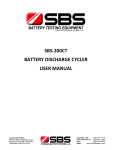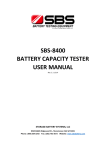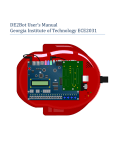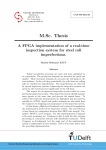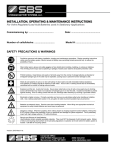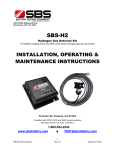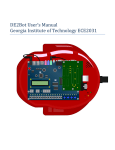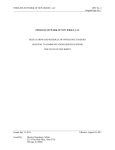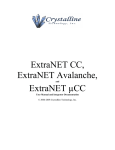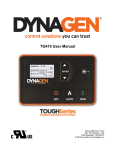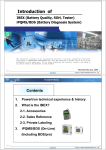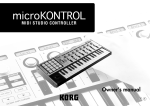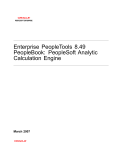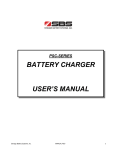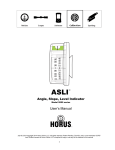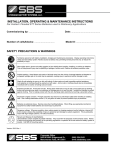Download sbs-8400 user manual battery discharge
Transcript
SBS-8400 USER MANUAL Storage Battery Systems * 800-554-2243 * www.sbsbattery.com SBS-8400 USER MANUAL BATTERY DISCHARGE & CAPACITY TESTER Storage Battery Systems N56 W16665 Ridgewood Dr. Menomonee Falls, WI 53051 USA Tel: 800-554-2243 www.sbsbattery.com Rev 1.1 -9-18-2012 SBS-8400 USER MANUAL Storage Battery Systems * 800-554-2243 * www.sbsbattery.com Contents 1. Introduction 1.1 Features 1.2 System Components 2. Technical Parameters 2.1 Environment & Condition for Use 2.2 Structure & Weight 2.3 Working Power Supply 2.4 Input Voltage from Battery Groups 2.5 Discharge Current Range 2.6 Parameter Display & Measurement Accuracy 2.7 Protection & Warning 2.8 Data Management & Communication 3. Basic Operational 3.1 Battery Testing 3.2 Constant Current 4. Operating Instructions 4.1 Environment Requirements 4.2 Panel Description 4.3 Main Machine Connection 4.4 Wireless Module Connections 4.5 Starting Up and Input Operation 4.6 Check the Connection of the Wireless Modules 4.7 The Preset Functions 4.8 Discharge 4.9 Download the Data to PC 4.10 System Setup, Activate Backup Modules & Calibration 4.11 Charge Monitoring Function 5. PC Software Instruction 5.1 Main Functions 5.2 Install Analysis Software to PC 5.3 Real-Time Recording During Testing 5.4 Download Data File from USB Disk 5.5 Generate Excel Test Report 6. Attention 7. After-Sale Service Rev 1.1 -9-18-2012 SBS-8400 USER MANUAL Storage Battery Systems * 800-554-2243 * www.sbsbattery.com 1. Introduction 1.1 Features In todays ever increasing market of Critical Power applications, battery systems still remain the weakest link in the protection of Critical loads and applications. Systems are now designed to run for a lifetime without failure, yet inherently, the crucial factor in these applications is the age, health and welfare of the DC battery system which is the actual source of energy during power or equipment failures. However, battery condition, performance and reliability are all predictable factors with regular maintenance and load testing programs in place. Scheduled maintenance and capacity tests will identify weak, aging, failing cells prior to their adverse affects of failure during critical operations. There are many factors which will affect the life cycle of a battery system in these applications, battery age, operating conditions, charge characteristics, number or cycles, depth of discharge. All of these factors affect the performance of your system and can lead to premature failures that go undetected unless preventative measures are taken. To guarantee your system will work when the time comes, it is necessary to do routine discharge testing to check the capacity of your battery systems. Testing will identify weak/failing cells prior to them failing when they are needed for operation. With the SBS-8400, we have come up with a very useful, highly accurate and highly intellectual tool for this purpose. Advantages of the SBS-8400 are: 1. 2. 3. 4. 5. 6. 7. 8. 9. 10. 11. 12. 13. Modular – Wireless battery monitoring technology. With modules capable of testing 1.2 – 2.0 VPC NiCd Batteries, and modules capable of testing lead acid 2.0, 6.0 and 12.0 Cells. Each module monitors 4 cells simultaneously, which reduces the number of modules required as well as reducing the number and lengths of wires required for testing. Online or Offline discharge testing. The SBS-8400 can simultaneously record the actual discharge currents of each battery string in the test. (Additional current clamps are required for multi-string testing) Discharge current stability – the SBS-8400 continuously monitors and corrects the discharge current to maintain a constant current discharge profile during load tests. Simple operation menus minimize the training time required to operate efficiently. New generation alloy materials for the power consumption section allow operation at reduced temperatures, higher safety and a reduction in size and weight. Real time scanning and display of voltages of each battery or cell during the discharge. Features visual and audible warning lights and alarms. 5.7 inch color LCD touchscreen. The big touchscreen allows easy adjustment and programming as well as the ability to directly display measurements and history graphs during the discharge test process. Intelligent analysis program monitors warning set point values and informs operator prior to test interruption. 8 programmable preset configurations eliminates the need to reconfigure for testing similar banks of batteries or cells. PC analysis software that can be used during the discharge for monitoring, or downloaded via a USB memory device for transfer to the PC for analysis and creation of reports. Large on-board memory for storing several sets of test data between downloads to the PC Software. The SBS-8400 also comes with an advanced analysis software program that allows: 1. 2. 3. 4. Real time communications with a PC during Testing, or downloading of data to USB memory device for transfer to a PC. Software interpretation and presentation of all discharge parameters including cell voltage, system voltage, discharge current, cell resistances, etc… Powerful calculation functions allow for calculation actual capacities of battery or cell in the test string. Graphic detailed reports for reviewing or printing. Rev 1.1 -9-18-2012 SBS-8400 USER MANUAL 5. Storage Battery Systems * 800-554-2243 * www.sbsbattery.com Export of test data into Excel spreadsheets for data retention. The SBS-8400 is a compact, light weight, simple to operate, and highly accurate way to meet your battery testing needs across the whole battery size spectrum from 12 VDC to 240 VDC. 1.2 System Components The SBS-8400 Battery Discharge and Capacity Tester consists of the Main Machine, wireless modules for cell monitoring, wireless signal receiver, and the analysis software for the collection of data and generation of reports. The main machine is organized by a color LCD screen, data processing, data monitoring, auxiliary power, power dissipation module and operating panel. colorful LCD screen SBS-8400 Battery discharge & capacity tester main machine data processing wireless modules for cells monitoring data monitoring PC analysis software wireless signal receiver auxiliary power power disipation panel operation 2. Technical Parameters 2.1 Environment & Condition for Use 2.1.1 Operating temperature -5℃~ +50℃, full power, forced-air cooling 2.1.2 Storage temperature -40℃~ +70℃ 2.1.3 Relative humidity ≤90% (40℃±2℃) 2.1.4 Altitude limit 0~2000m, -5℃~+50℃, full power 2000m~4000m, -5℃~+30℃, full power; 30℃~+50℃, decrease power for use. Rev 1.1 -9-18-2012 SBS-8400 USER MANUAL Storage Battery Systems * 800-554-2243 * www.sbsbattery.com 2.2 Structure & Weight The SBS-8400 is a sturdy, lightweight, stand alone unit that is very portable. Dimension (length*width*height): SBS-8400: 26 3/8” ×9 1/16” ×14 7/16” Weight: SBS-8400: 53 Pounds (tester only) 2.3 Working Power Supply SBS-8400: 110/220 VAC (with external transformer) single phase 45Hz~65Hz 2.4 DC Input Voltage from Battery Groups SBS-8400: 10~300V 2.5 Discharge Current Range Voltage range Current range 8-15V 0-60 A 15-30V 0-120 A 40-60V 0-120 A 70-140V 0-120 A 140-280V 0-60 A 2.6 Parameter Display & Measurement Accuracy Parameter display: 5.7 inch LCD color screen Displayed discharge current: resolution 0.1A Displayed battery group voltage: resolution 0.1V Displayed cell voltage: 1.2V/2V/6V cells resolution 0.001V 12V cells resolution 0.01V (accuracy ≤±0.5%) (accuracy≤±0.5%) (accuracy≤±0.05%) (accuracy≤±0.05%) 2.7 Warning & Protection The SBS-8400 has many built in protective features. 2.7.1 DC Input Over voltage protection, Reverse Polarity Protection, DC Current limit and system over temperature. 2.7.2 In the event of an abnormality during testing, the warning light and buzzer will activate, and the LCD display will alert the operator of the status of alarms. Rev 1.1 -9-18-2012 SBS-8400 USER MANUAL Storage Battery Systems * 800-554-2243 * www.sbsbattery.com 2.8 Data Management & Communication 2.8.1 Discharge data management a) Tester continuously and automatically logs and saves data during tests which is stored internally in memory and retained even when the main unit is powered off. b) Allows for manual inspection of data via the touchscreen. c) Communications port for reading and transfer of the data from the tester to PC / Software. d) Displays the free memory still available on the tester. e) Smart deleting feature: deletes all records or only the chosen record. 2.8.2 Setting Test Parameters A Data Management Interface allows the user to set the discharge current, battery capacity, cell numbers, the stop limit value of battery group voltage and cell voltage, discharge capacity, discharge time in the allowed range. The SBS-8400 provides 8 Preset locations to set up tests for common systems. 2.8.3 Communication a) Internal wireless signal receiver records the cell monitoring & sampling data. b) The RS232 port in the SBS-8400 machine allows your PC to connect with SBS-8400 to display real-time discharge data. c) The USB port in the SBS-8400 machine allows user to download the data to PC by USB device.. d) The control port allows the SBS-8400 machine to parallel with additional units for increased discharge rates. 3. Basic Operational Principle 3.1 Battery Testing Due to the complexity of battery electro-chemical reactions and the variety of materials, construction, installations, and operational environments; battery systems from different manufacturers have many difference. Even strings of the same battery type from the same manufacturer can vary greatly with these other factors in place. Until recently there has not been a uniform method to determine good batteries from bad ones. The modes in which batteries fail is still complicated, and typical methods of checking cell float or charge voltages is not always accurate Currently the most widely recommended practice, and in accordance with the IEEE guidelines, is the routine maintenance of the battery system combined with periodic full load capacity testing. Rev 1.1 -9-18-2012 SBS-8400 USER MANUAL Storage Battery Systems * 800-554-2243 * www.sbsbattery.com We have learned the following: a) There is no correlation between normal voltages in float conditions and the actual capacity of the battery or cell. As we know, even batteries which have a very low capacity can exhibit normal voltages during the application of a float charge. It is very difficult to determine good from bad cells based solely on the applied float voltage. Capacity can only be measured by the cell/battery’s ability to perform to its specifications during a load test. b) Full capacity discharge is the only true way to effectively measure a batteries ability to perform. . For battery systems that are comprised of a group of cells / batteries connected in a series string, the entire string is only as reliable as the weakest link in the system. So the primary goal of the battery discharge testing is to find the weakest cells and replace them to increase the overall service life of the entire battery system. Typically, a discharge test is conducted by applying a constant current to the system and monitoring each individual cell / battery until the first cell reaches the low voltage limit determined to mark the end of the test. Based on the actual data collected during this discharge, we can determine actual true capacity of each cell. The voltage curve in the discharging process is as follows: Since every battery type and manufacturer will have a different discharge characteristic curve, testing must be tailored to the specific ratings of the battery under test. There are different discharge rates for each battery also, and test rates must be selected that test the battery capacity without causing harmful effects to the cells. Historical data is best collected by utilizing the same discharge rate and conditions for each consecutive test. 3.2 Constant Current Using highly accurate PWM (Pulse Width Modulation) control technology, the SBS-8400 in conjunction with the control unit can maintain a very accurate and constant discharge current with little or no operator adjustment necessary.. Rev 1.1 -9-18-2012 SBS-8400 USER MANUAL Storage Battery Systems * 800-554-2243 * www.sbsbattery.com 4. Operating Instructions 4.1 Environment Requirements The unit is designed to operate in environments that are free of conductive dust, corrosive liquids or fumes, no flammable or explosive gases and in a well ventilated area to dissipate heat production. 4.2 Panel Description Antenna Control buttons LCD screen Air cooling fans External current measurement RS232 port Parallel control socket USB port AC input socket DC breaker Power switch Cable socket Main machine Power light (green) Alligator clip (4 red, 1 black) Communicate light (red) Wireless module Rev 1.1 -9-18-2012 SBS-8400 USER MANUAL Storage Battery Systems * 800-554-2243 * www.sbsbattery.com 4.3 Main Machine Connections 220V AC power source 110V AC power source 110V AC to 220V AC transformer Power supply cord DC Breaker Power cable (black) Power cable (red) Battery String 4.3.1 Connect the Red (+) and Black (-) cables to the power connectors and bolt the test cables onto the main + and main – of the battery string to be tested. 4.3.2 Use the AC power supply cord to connect SBS-8400 to an AC power source a) SBS-8400 supports the 220V AC 50Hz/60Hz external AC power source. b) If the power source is 110V AC 50Hz/60Hz, please use an 110V AC to 220V AC transformer to start the tester. Because external AC power source only provides the power for LCD and control circuit, the normal rated power of the transformer needs not to be high. Rev 1.1 -9-18-2012 SBS-8400 USER MANUAL Storage Battery Systems * 800-554-2243 * www.sbsbattery.com 4.4 Wireless Module Connections Prior to connecting any data modules pull out the antenna on the SBS-8400 tester. Wiring Hint Wireless module Black Red 3 Red 2 Red 1 (the longest one) Wireless module number and the batteries to connect to For example: NO.1 module -- Connect the NO.1-NO.4 (from positive electrode) NO.2 module -- Connect the NO.5-NO.8 (from positive electrode) NO.3 module -- Connect the NO.9-NO.12 (from positive electrode) ……….. Red 4 (the shortest one) Cell NO.1 Cell NO.2 Cell NO.3 Cell NO.4 NO. 1 Wireless module Cell NO.5 Cell NO.6 Cell NO.7 Cell NO.8 NO. 2 Wireless module Cell NO.4K+1 Cell NO.4K+2 Cell NO.4K+3 Cell NO.4K+4 NO. N Wireless module 4.4.1 Read the module number from the label in the modules and find the right batteries to connect with. Beginning with the most + positive (main positive) and module number 1, install the wireless modules on the batteries / cells. Modules must be wired in the order above to prevent damage. Never wire in groups that are not in series ( 1,3,8 9 etc.) 4.4.2 Use the alligator clips (4 red, 1 black) to connect modules to the batteries. Please follow the proper wiring rule “Red 1 to Red 4, from long to short” and the wiring hint also printed on the label of the modules. Rev 1.1 -9-18-2012 SBS-8400 USER MANUAL Storage Battery Systems * 800-554-2243 * www.sbsbattery.com 4.5 Starting Up and Input Operation Power switch 4.5.1 After the SBS-8400 is connected to the battery system. Turn on the AC Power switch on the front of the unit. 4.5.2 A welcome screen will appear and the main menu will display after approx. 10 seconds. Touching the screen anywhere will bring up the main menu without the delay. 4.5.3 Menu selection and keypad entry is done directly on the touch scree of the SBS-8400. The welcome screen The main menu 4.6 Check the Connection of the Wireless Modules 4.6.1 Press “Battery View” on the main menu interface. If all wireless modules are connecting correctly, you will see the voltage of each battery displayed. If the voltages of some batteries are not showing correctly, please check the wireless modules connections. The highest & lowest voltage battery in battery string is displayed at the top of the screen. Table Next Chart Prev Screen displays 24 batteries at a time, Next and Prev. keys can be used to see more batteries. Rev 1.1 -9-18-2012 Back to the main menu SBS-8400 USER MANUAL Storage Battery Systems * 800-554-2243 * www.sbsbattery.com 4.6.2 Press “Chart” to see the histogram of each battery 4.6.3 In both the table and chart interface, one screen can only show 24 batteries. If the tested battery group has more than 24 batteries, press “Next” & “Prev” to switch screens. 4.6.4 Press “Exit” to go back to the main menu. 4.7 The Preset Functions (No Essential Operation) 4.7.1 The preset function provides for 8 locations. Test parameters can be saved and reused for tests of the same type and quantity of batteries. The SBS-8400 also supports manual settings in the discharge interface without using the presets. Press “Preset” in the main menu to enter into the preset function interface. Preset parameter number Preset Capacity: The rated capacity of the tested battery group GroupSum: the group number for once discharging HourRate: The hour rate of discharge BattLows: the quantity of the batteries which voltages below the “BattLow” CurrSet: The current of discharge(automatic change according “Capacity”&“HourRate”) SaveTime: the time interval of the data recording CapaSet: the capacity need to be discharged Back to the main menu Recover all parameter to default values TimeSet: the discharge time BattLow: the lower limit voltage of the single battery BattSum: the battery quantity in the battery group To change Parameter number Param 1, Param 2, Param 3….. Press “Modify” to locate the preset parameters need to be changed, “+”, “-” for change value, “Cancel” to quit. After all setting, press “Apply” to save GroupLow: the lower limit voltage of battery group 4.7.2 “CapaSet”, “TimeSet”, “BattLow”, “GroupLow” are all test termination stop conditions. If any set value is reached, the discharge will be stopped automatically. 4.7.3 For 1 battery string discharging, the “GroupSum” should be left at “001G.” If you need 24 strings parallel discharging at one time, you will need 2-4 times wireless modules, and the current will be divided1/2-1/4 for each group. 4.7.4 If you want the discharge to stop when one bad battery reaches the “BattLow,” please keep “Battlows” set at “001#”. If you want the discharge to stop when N bad batteries reach the “BattLow,” you can set the “BattLows” to the number you need. Rev 1.1 -9-18-2012 SBS-8400 USER MANUAL Storage Battery Systems * 800-554-2243 * www.sbsbattery.com 4.7.5 If you don’t need wireless modules during the discharge, please set the “BattSum” to “000#”, and the “BattLow” function will be disabled. 4.8 Discharge 4.8.1 Press “Discharge” in the main menu to enter the parameter interface. 4.8.2 In the parameter interface, you will see all the same parameters in the “Preset.” You can re-edit the discharge parameters here and “Apply” to save them. 4.8.3 Press “Start” to enter the discharge interface, then press “Start” again to start discharging the battery string. (please remember to turn on the DC power switch first if needed). 4.8.4 Manually stopping the discharge: Press “Pause” to pause the discharge, or press “Stop” to end the discharge. Pressing “Start” will continue the discharge. Press “Modify” to locate the preset parameters needed to be changed, “+”, “-” for change value, “Cancel” to quit. After all settings are completed, press “Apply” to save. The changes will be stored in the preset number currently in use. Parameter Back to the main menu Discharge To load the preset you need When the discharge starts, you will see the status in this screen. It includes: GroupVol: the voltage of battery group CurrentSum: the discharge current CapacitSum: the capacity already discharged ConsumTim: the time since the discharge started BattLowSum: the quantity of the batteries at voltage already below the “BattLow” you set MaxBatt(V): the highest voltage battery in the group MinBatt(V): the lowest voltage battery in the group To browse all batteries voltage, “Table”&“Chart” screens are similar with the one in “BatteryView” Change the parameters in the process of discharging, all changes can be activated immediately! 4.8.5 Pressing “Param” during the discharge will allow you to change parameters as needed (if necessary). All changes activate immediately and the discharging will not be stopped. 4.8.6 “SysState:” In the discharge interface will display the status of the test. Rev 1.1 -9-18-2012 SBS-8400 USER MANUAL Storage Battery Systems * 800-554-2243 * www.sbsbattery.com 4.9 Download the Data to PC 4.9.1 SBS-8400 provides two ways to record the test data: a) Use a RS232 cable to connect the main machine with a PC. Through the analysis software, real-time test data can be downloaded during the test. b) Internal memory always saves all testing data. You can download the data later by USB disk or RS232 cable to the PC. 4.9.2 Press “Data” in the main menu to enter into the data interface. Data The used percentage of internal memory. If this value is low, please delete some old data The information of the data file Test time & date Delete the chosen file Delete all data files Back to the main menu If the data files are more than 1 page, use “Up” “Down” to browse Plug USB disk into the USB port, press “USB” to download the chosen file Use RS232 cable to connect main machine with PC, download the chosen file by analysis software 4.10 System Setup, Activate Backup Modules & Calibration (No Essential Operation) 4.10.1 Press “Setup” in the main menu to enter the setup interface. 4.10.2 In the setup interface, you can use “ConfigModuleAddr” to activate the backup modules for replacing one that is malfunctioning. System date & time Setup Press “Modify” to locate the parameters needed to be changed, “+”, “-” for change value ConfigModuleAddr: Modify or reprogram a modules ID number. BatteryLowAct: the automatic operation of test stop or pause when any battery reaches the “BattLow” setting. BattOrder: wireless module connection order from main + or main - of the battery string. Rev 1.1 -9-18-2012 Connect the module to any four consecutive batteries. Disconnect all other wireless modules. If you want the module to be recognized as module number 5, enter 005 and press ”Config”. Module is renumbered. SBS-8400 USER MANUAL Storage Battery Systems * 800-554-2243 * www.sbsbattery.com 4.10.3 SBS-8400 Includes a calibration function. If you have high accuracy instruments, you can calibrate the tester yourself. Change the date to 2099-12(year-month), the “Cal” button will be activated and appear in the right menu. Press “Cal” to enter into the calibration interface. GroupVol: calibrate the voltage of battery string Dischg: calibrate discharge current Calibrate Press “Cal” to select the parameters needed to be calibrated, “+”, “-” to change the value, “Cancel” to quit, and “Apply” to save the changes. Charge: calibrate charge current Clamp: calibrate external current clamp TEMPE: calibrate the temperature Back to setup interface BattVol: calibrate the battery voltage 4.11 Charge Monitoring Function 4.11.1 Although SBS-8400 can’t charge the test battery string, it can provide a charge monitoring function to record the values during charging. 4.11.2 Press “Charge” in the main menu to enter into the charge interface, and press “start” to record the recharge process. Charge When pressing “Start” to record the charge, you can see the status in this screen, it includes: GroupVol: the voltage of battery string CurrentSum: the charge current (external clamp needed) CapacitSum: the capacity already charged (external clamp needed) ConsumTim: the time since the charge started MaxBatt(V): the highest voltage battery in the group MinBatt(V): the lowest voltage battery in the group To browse all of the batteries voltages, “Table”&“Chart” screens are similar to the one in “BatteryView” Rev 1.1 -9-18-2012 Back to the main menu SBS-8400 USER MANUAL Storage Battery Systems * 800-554-2243 * www.sbsbattery.com 5. PC Software Instruction 5.1 Main Functions a) Recording real-time discharge data via connection between the main machine and a PC. b) Read, display and save the downloaded USB data. c) Generate EXCEL test reports. 5.2 Install Analysis Software to PC 5.2.1 Insert the software CD into the CD/DVD drive of the PC. 5.2.2 Follow the prompts to finish the installation. 5.2.3 After the installation, you can click the desktop icon to open the software. PC explorer Install program Desktop icon Main interface Rev 1.1 -9-18-2012 SBS-8400 USER MANUAL Storage Battery Systems * 800-554-2243 * www.sbsbattery.com 5.3 Real-Time Recording During Testing 5.3.1 Use the RS232 connector to connect the main machine with the PC. RS232 wire RS232 to USB converter PC 5.3.2 Choose “Connect” in the “Detect” menu to open the “RealTime Monitoring Link” interface. Instrument types: choose “SBS-8400” for SBS8400 Batteries Attribute: input some information of the test battery group (the red parameters need to be filled) Communication Port: Choose the COM port number (you will find it in Device Manager) Battery Group Count(G) Number of parallel strings being tested at the same time. Default is “1”. Save Data: after all information is entered, press “Save” to create a “*.FGDF” file to save the real-time data. If you are testing more than one string at a time, you can select the batch check mark to save all strings in separate data files. After saving the file, press “Connect” to wait for the real-time data 5.3.3 Ensure that data in the RED highlighted fields is correct for the batteries you are testing as these are the numbers used to determine capacity calculations. Start the discharge of the string from the main machine and the real time data will begin transmitting to the PC via the RS-232. Rev 1.1 -9-18-2012 SBS-8400 USER MANUAL Storage Battery Systems * 800-554-2243 * www.sbsbattery.com 5.3.4 The real-time data will be saved simultaneously. You can even minimize the software during the process of discharging. The data file will continue to record the data before closing. 5.4 Download Data File from USB Disk 5.4.1 Downloading the data file from the main machine. You will see the data file named “FGxxxxxx.FBO” (“xxxxxx” is the start time of the testing.) 5.4.2 Double click the file to activate “Date Information” screen, or you can open the software first and choose “Open file” in the “file menu.” PC explorer The Software will load the parameters which you set in main machine automatically. You can fill other non-essential information or change the red parameters if you need to. Main interface Rev 1.1 -9-18-2012 SBS-8400 USER MANUAL Storage Battery Systems * 800-554-2243 * www.sbsbattery.com 5.4.3 In the main interface, you will see 6 windows that show all of the test information: a) Total current chart: the current during the discharging (the value is minus because discharging) b) Monomer curve: the voltage curve of each battery, it can be added and deleted by right clicking on the menu. Input the battery number range you want to be displayed or hidden c) Monomer capacity- residual capacity: Show the residual capacity, actual capacity and capacity percent of each battery (it can be chosen to be displayed by right clicking on the menu) d) Data form: Show each discharge data by time interval during the discharging. e) Monomer voltage: Each battery voltage will be displayed in the bar chart. The bar chart will show you the initial and end voltages. Using the scroll bar in the top of this window, you can move to any time in the testing to see the relevant result. f) Total voltage: the voltage curve of battery string during the discharging process. 5.5 Generate Excel Test Report 5.5.1 Press icon to generate a report. In the “system information” window, it will show you the number of pages in report. Choose “No” to generate an Excel report which includes all information. If you don’t need a full report (which may have many pages), press “Yes” to generate an Excel report, which has the page numbers you want. Excel page choose Generate an Excel report which has the page numbers you want Rev 1.1 -9-18-2012 Generate an Excel report including all data. SBS-8400 USER MANUAL Storage Battery Systems * 800-554-2243 * www.sbsbattery.com 5.5.2 In the “screen data” interface, input the page numbers you want, and press “ScreenData.” Press “CreateReport” to save the Excel report. Generate an Excel report which has the page numbers you want Recover all pages of the data file Back to main interface 6. Attention 6.1 For safety and efficiency, please read the manual entirely before operation. 6.2 During discharge operation, we recommend the operator stay in the vicinity of the tester. 6.3 Verify the system to be tested is the same overall system voltage as the tester. Exposing the tester to voltages above its ratings can severely damage the unit. 6.4 The wireless modules are required to be used to collect the data of each cell/battery. Without them, the PC analysis software can’t provide the voltage drop record to estimate the capacities. 6.5 If overheat, over current, or equipment failure happens during the discharge test, the warning alarm will activate automatically. Please turn off the DC input switch to avoid any further damage. 7. After-Sale Service Storage Battery Systems, LLC. provides technical consulting and repair servicing for all of our battery testing equipment. If you have any technical questions or problems, please contact us: Storage Battery Systems N56W16665 Ridgewood Dr. Menomonee Falls, WI 53051 USA Tel: 800-554-2243 [email protected] www.sbsbattery.com Rev 1.1 -9-18-2012




















